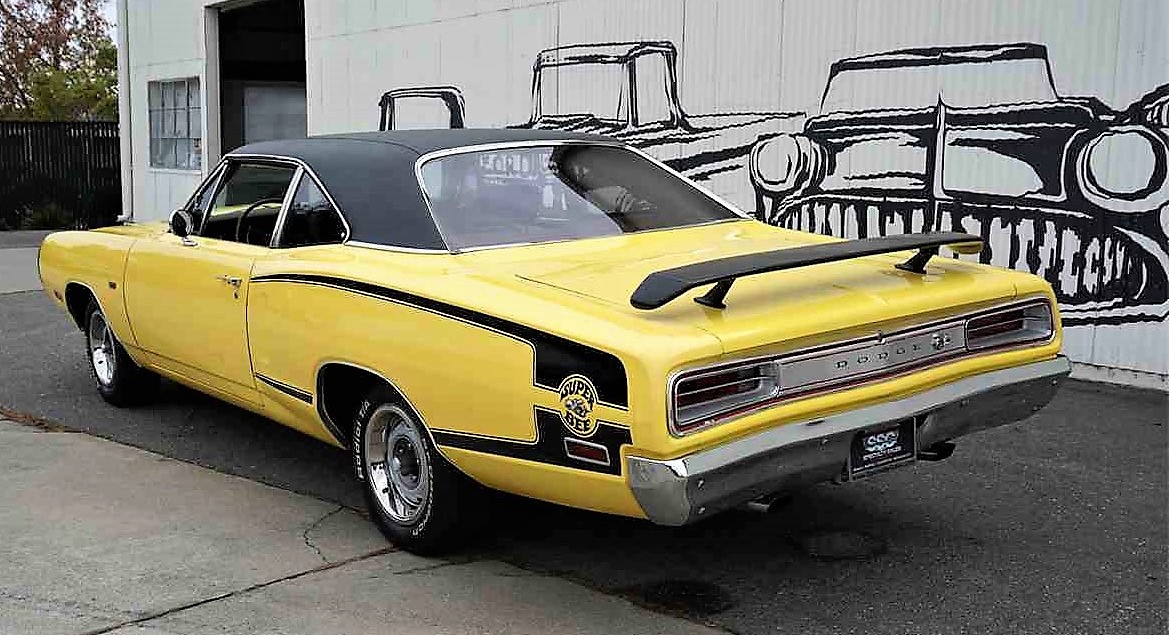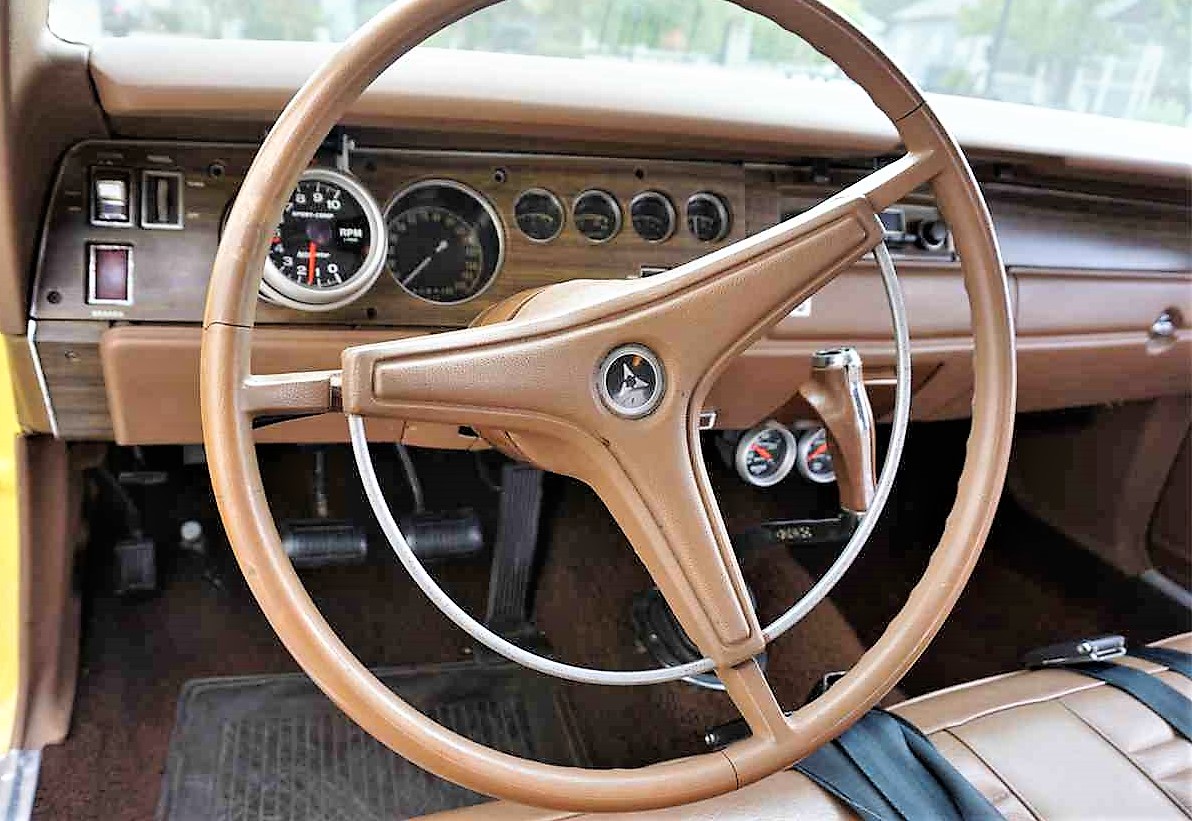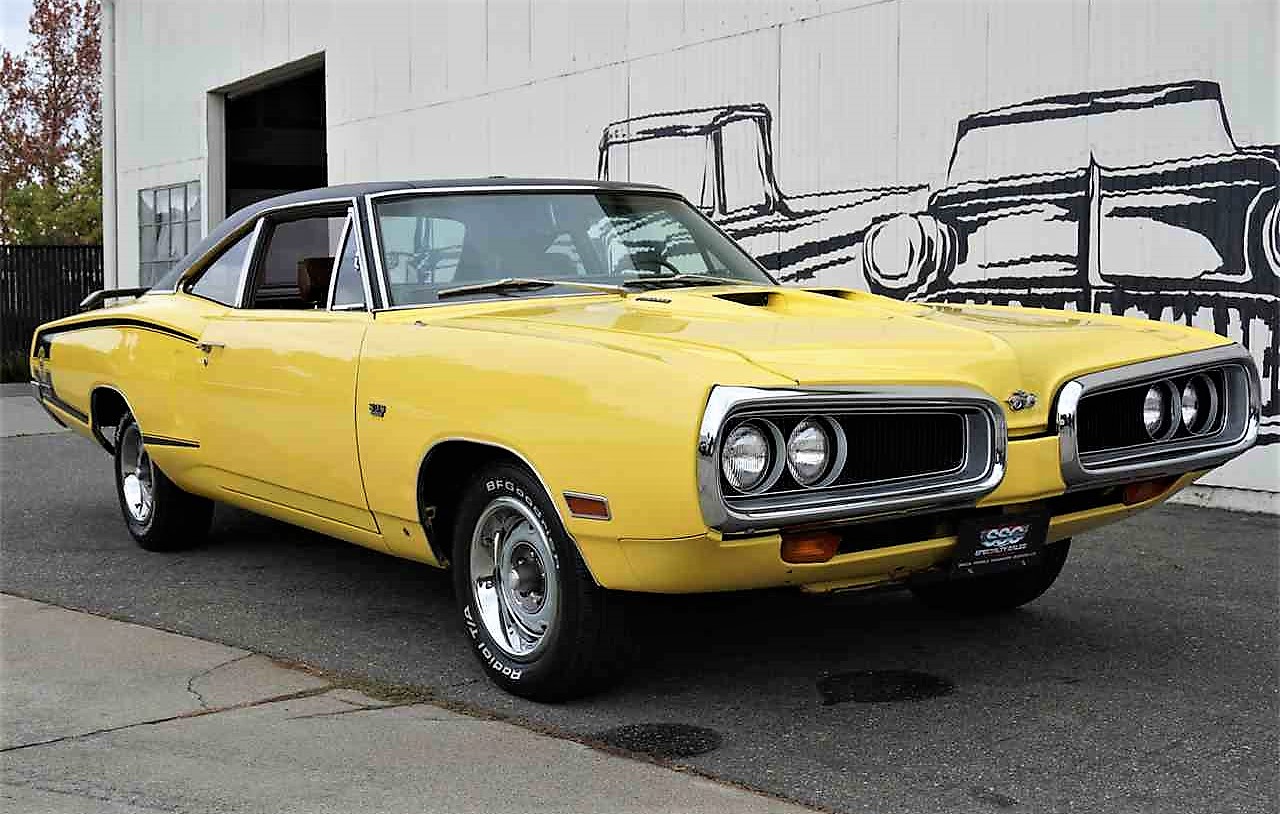Responding to the runaway success of Plymouth Road Runner, the Dodge division of Chrysler set out to create its own midsize Mopar muscle car. Since it would be essentially a rebadged version of the Plymouth, the important question would be what to name it.
The answer was Super Bee, a play on the B-body designation of Chrysler’s midsize sedans (Belvedere for Plymouth, Coronet for Dodge) and an extension of the Dodge “Scat Pack” Bee derivation. And the result was a cool muscle car for Dodge with a now-iconic design.

The Pick of the Day is a 1970 Dodge Coronet Super Bee, bright yellow with black graphics and badging. The muscular emblem of the angry bee on wheels that is so prominently displayed has held up well, now being used again on current performance versions of Dodge Challengers and Chargers.
Super Bees were available with two V8 engine options, the famed 426 Hemi that put out 425 horsepower or the base 383 Magnum that churned 335 horsepower. This Bee has the lesser Magnum mill, attached to a four-speed manual accessed via a macho Hurst pistol-grip shifter. That should have plenty of guts for all intents and purposes.
Otherwise, the Dodge is described as well-optioned by the seller, a dealer in Fairfield, California, advertising the car on ClassicCars.com, with “power steering, period-correct wheels and too many other factory features to list.”

“This 1970 Dodge Coronet Super Bee has been with three lifetime owners, the most recent of which purchased it in 2010,” according to the ad. “He informs us that this outstanding example is listed in the Super Bee registry and that the numbers-matching drivetrain is still in place.
“A closer inspection shows that this muscle car is highly period correct with very nice original chrome and some minor blemishes in the color-correct paint. The spacing on the hood and all of the body panels are excellent as well.
“Under the hood, you’ll find a nicely sorted factory engine compartment that is not quite up to show quality standards; it can use some minor refreshing to really be taken to the next level.”

There is no mention in the ad of any restoration history, but it would appear from the description that the 90,000-mile Dodge is a well-preserved survivor.
“The interior of this 1970 Dodge Coronet Super Bee is exceptional with … super-clean factory seating, dash console, headliner, door panels and steering column,” the seller says. “All of the factory gauges are working properly (including the Super Bee tachometers) and this prestigious muscle car offers excellent performance on the open road.”
The asking price of $39,900 seems about right for the lesser-powered version of this desirable and highly visible Super Bee.
“It would be hard to find a more-original, period-correct example at this price point,” the dealer notes.
To view this listing on ClassicCars.com, see Pick of the Day






The 440 and 440 six pack were available as well in 70
Had a best bud in highschool that had a 383Magnum/727auto/bench seat version of this; after a girlfriend spun bearings trying to unstick it from a snowy ditch (bias ply Kelly Supercharger N50-15’s not good in the winter), he built a 440 and got a B&M shiftkit/ torque converter for the tranny, which we installed ahead of the factory pumpkin with 3.23 gears. It was "GoManGo" hideous orange, w/black vinyl top & interior, so could carry 6-7 skinny highschoolers easily.
And for a car with the aero of a suburban ranch, man, that thing would fly; watched from the sidelines as my bud put half a length on a real 426 Hemi ’65 Coronet driven by a 30something that parted with $20- big bucks for a kid in 1976. Two warnings: even with the 3.23 axle, the mileage never varied from abysmal; and that lil hood extension between the loop bumpers was razor sharp on the back, and would catch your head if you forgot. Don’t ask me how I know this.
Still, for a really ugly car, I’ve always liked them, perhaps for the nostalgia factor, but I also always thought that the ’68-’69’s looked better.